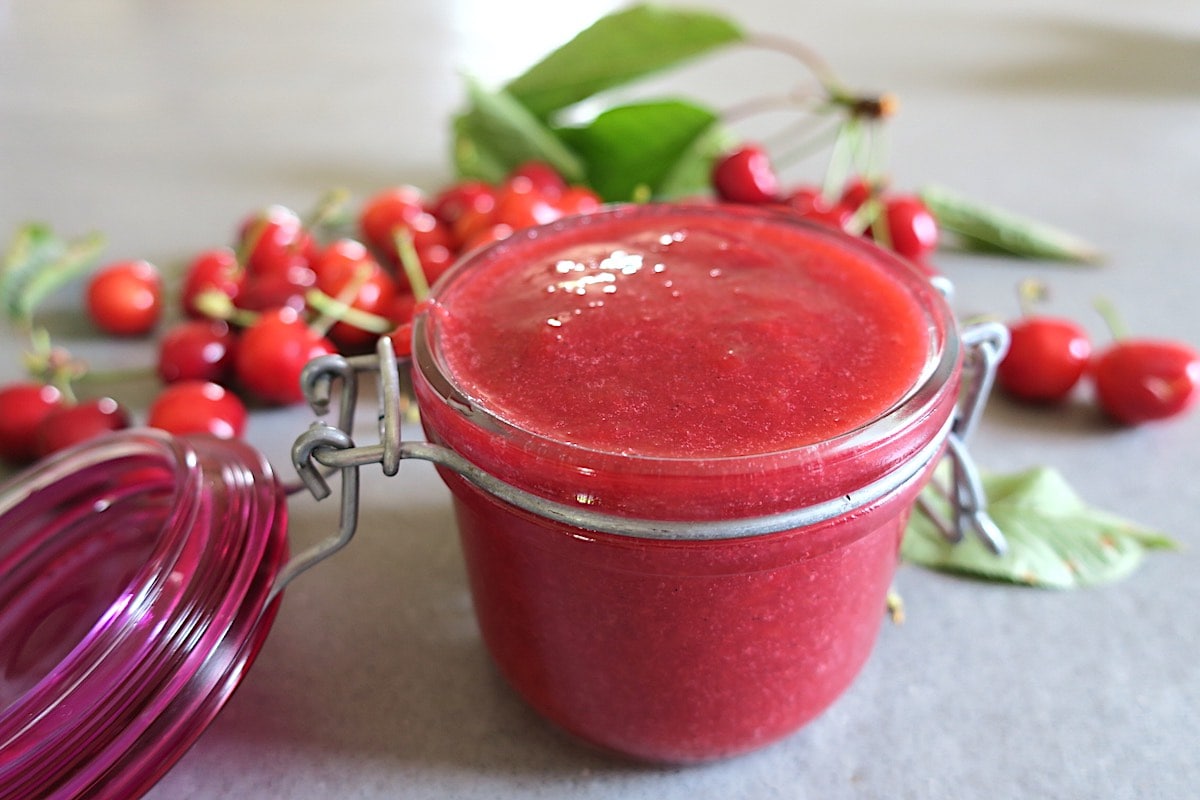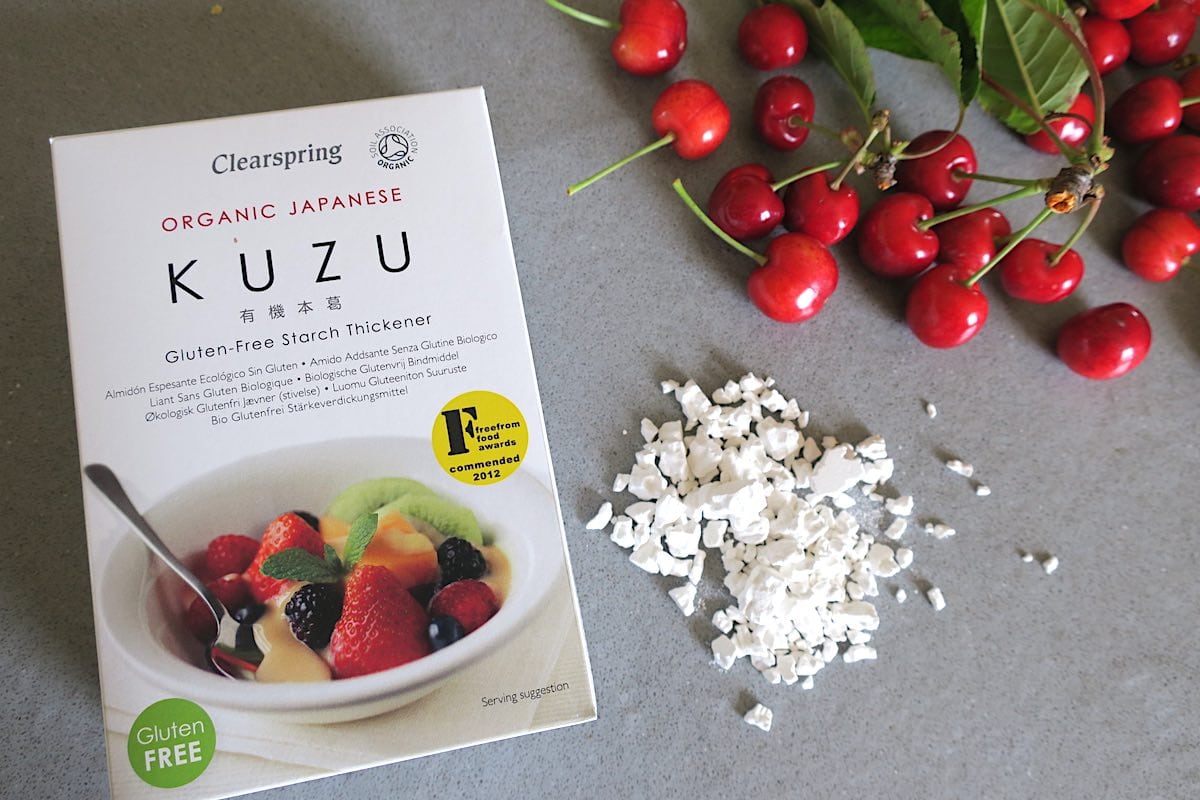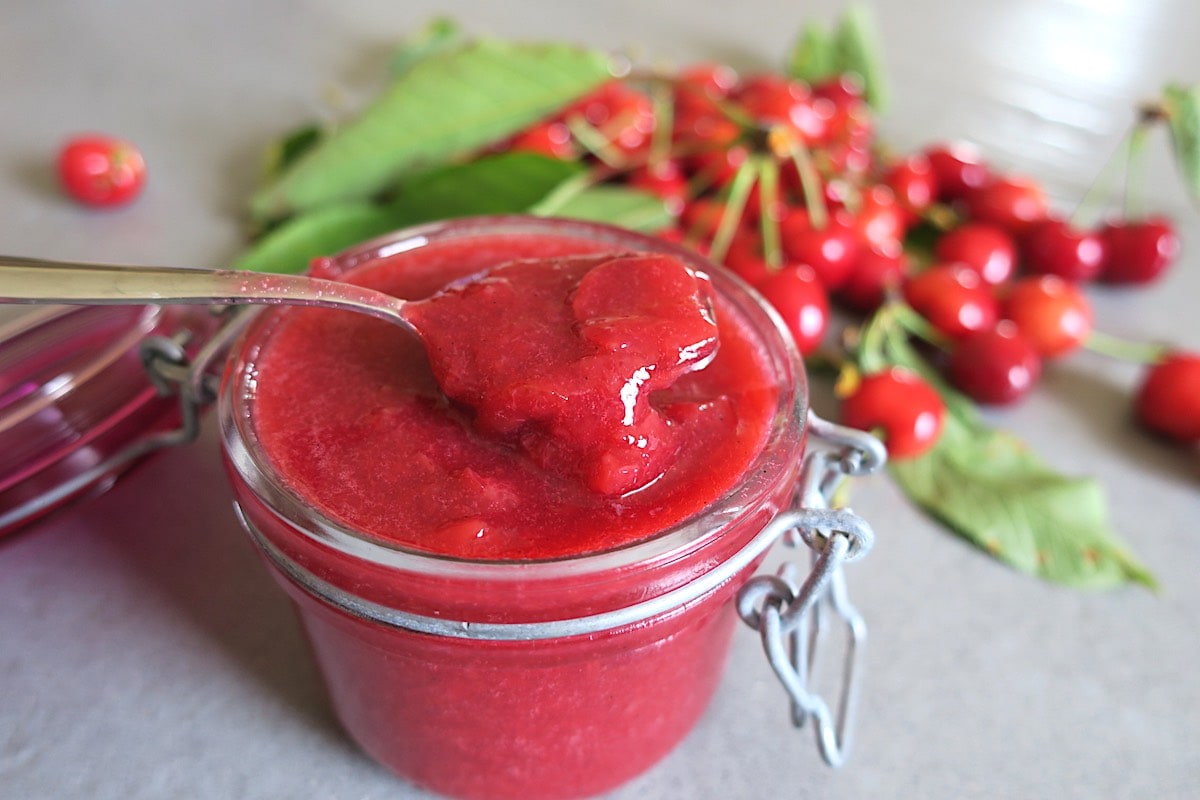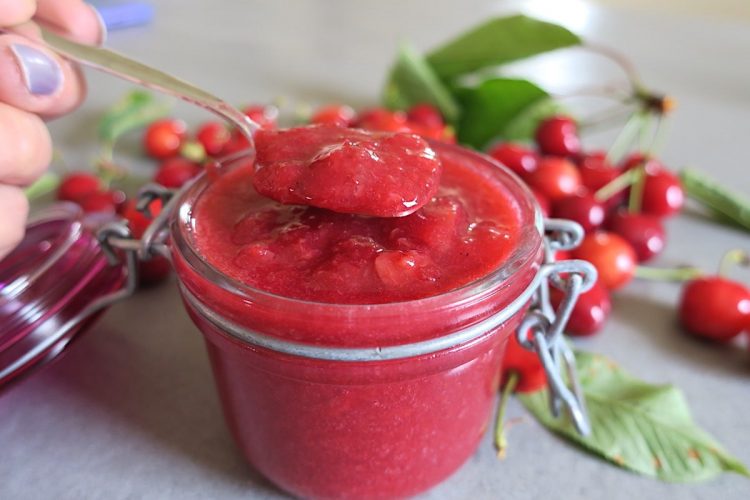Sugar Free Cherry Jam with Kuzu is simply delicious, with 1.3g net carbs for each 10g (1/2 TBSP) serving.
With this in the fridge, is there any reason why you can’t have a keto JAM SANDWICH or JAM ON TOAST? I can’t think of any… 😉
It’s a great, healthy snack and a much better alternative to fat bombs and other calorie laden treats. Imagine a slice or two of my Amazing Protein Bread , or a High Fibre Bun, or other keto bread of your choice, slathered with organic butter from pasture cows, and a dollop of my cherry jam… (drooling allowed…)
Pure instant delight from a sweet fix that won’t make you feel guilty afterwards.
But what the heck is kuzu, and why did I choose it, when I could have opted for gelatine, agar agar, or chia seeds, and end up with fewer carbs? Aaah, well…
All About Kuzu Starch
I recently purchased some Umeboshi paste to experiment with my home-made vegan cheese (don’t ask…). Inside the Amazon delivery box was an unexpected – and free – pack of kuzu that the company thoughtfully decided to gift me. I didn’t have a clue what it was, and it almost went in the bin when I read the word starch on the packaging.

However. Curiosity got the better of me and I decided to look it up. Turns out that kuzu (also known as kudzu) is another super-food for the insanely health conscious like myself. Not a new super-food, mind, but one that’s been used in Japanese cuisine and medicine for centuries.
Kuzu starch comes from the ginormous root of Pueraria Lobata, a relentless, fast-growing and invasive weed that can be a costly nuissance if left uncontained. But the plant also has an amazing array of nutritional and medicinal properties. We all know about the importance of gastro-intestinal health and increased alkalinity for systemic well-being. So it’s no surpise that kuzu’s ability to reduce inflammation and acidity has made this Japanese healing wonder so palatable in the West.

After reading about this amazing starch, I just had to try it out. And with my Italian cherry tree in full fructiferous swing, what better way to test it than to make a sugar free cherry jam with kuzu!
So there you go, my dear friends. Kuzu may be very high in carbohydrates, but a little goes a long way. It is flavourless and creates a clear gel once heated. So it doesn’t affect the look or flavour of your end-product. And it doesn’t impart an odd residual texture.

Would you rather stick to a more common gelling ingredient? You can certainly replace the kuzu with gelatine, agar-agar or chia seeds.
As for the Italian cherries, they contain 9g net carbs (per 100g), so they’re in fact a better keto option than blueberries (11.5g). But mulberries (8g), strawberries (6g), blackberries (5g) and raspberries (5g) contain fewer net carbs.

The bottom line is that one serving (10g/0.5 TBSP) of Sugar Free Cherry Jam with Kuzu contains just 1.3g net carbs. And you shouldn’t lose sleep over lower-carb alternatives just for the sake of a tiny little difference.

This jam is healthy. It tastes great. It’s easy to create. Keto life is sweet indeed!
Enjoy!
- Yield: 200g total
- Serving: 10g (1/2 TBSP)
- Calories: 6
- Fat: 0
- Net Carbs: 1.3g
- Protein: 0

- 300g fresh cherries (net weight after removing stalks and seeds = circa 250g)
- 15ml (1/2 TBSP) fresh lemon juice
- 2 TBSP icing 'sugar' (U.S. alternative HERE) (or Make your Own)
- 4g (1/2 TBSP) kuzu root (U.S. option HERE)
- 1 TBSP water
- 1 tsp vanilla paste (U.S. option HERE)
- cut the flesh of the cherries away from the seeds and stalks and place them in a small, heavy-base saucepan with lemon juice and icing 'sugar'.
- bring to the boil, then simmer on medium until mushy and reduced (about 20 mins - depending on ripeness of the fruit and size of cut pieces).
- crush and dilute kuzu in 1 TBSP water, add it to the cherry compote and simmer for another 5 minutes.
- leave to cool for 10 mins, then purée to your desired consistency using an immersion (stick) blender.
- add vanilla paste, check and adjust sweetness to taste.
- once completely cooled, transfer to a sealable jar and keep refrigerated for up to 2 weeks.
For even greater accuracy, I used precision scales to weigh the kuzu (U.S. option HERE).















